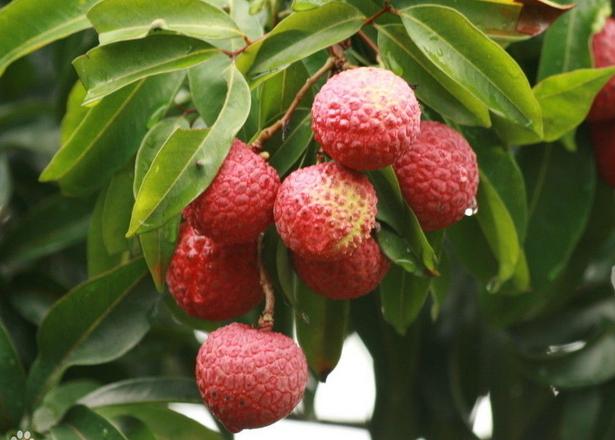 g into its main harvesting season during June in northern Vietnam. As the fruit ripen in a short period of time with abundant volume, the country is striving to boost its sale with a focus on exporting to China, local media reported.
g into its main harvesting season during June in northern Vietnam. As the fruit ripen in a short period of time with abundant volume, the country is striving to boost its sale with a focus on exporting to China, local media reported.The China-originated litchi is mainly grown in Thanh Ha district in northern Hai Duong province and Luc Ngan district in northern Bac Giang province.
Local Dan Tri (Knowledge for People) online newspaper recently quoted statistics from People's Committee of Luc Ngan as saying that in the season of 2014, some 40 percent of the total litchi output of the district is exported to China while the remaining 60 percent is consumed in domestic market as well as exported to several countries including Laos, Cambodia and Japan, among others.
Nguyen Manh Ha, head of economic-infrastructure office of Luc Ngan was quoted by local newspaper Vietnamnet as saying that as of June 20, a total of 268 Chinese vendors are working in 85 points of purchase around the area. In 2013, a total of 306 Chinese vendors came to Luc Ngan to buy litchi.
The output of litchi of Luc Ngan in this season is estimated to reach 100,000 tons, about 10,000 to 20,000 tons higher than the same period in 2013, said Ha. "Chinese vendors hire local people to weigh litchi and pay money for farmers. Then local people are hired to pack litchi into foam boxes to bring the fruit to China via Tan Thanh border gate in northern Lang Son province," Ha said. "Luc Ngan's litchi remains a popular fruit on Chinese market," said Ha, adding that Chinese vendors bought only carefully- selected litchi with good and fresh appearance and delicious taste. The type of litchi with lower quality is usually bought by local vendors.
This year, the price of litchi is lower than that of 2013, said Ha.
Hoang Viet Duong, 38, a litchi farmer in Hai Duong province was quoted by Tuoi Tre (Youth) online newspaper as saying on Monday that Although the price of litchi is very cheap, local farmers cannot grow other plants instead of litchi since they neither have capital nor technology.
Lam, a farmer in Luc Ngan, said that his family owns 500 litchi trees. Lam earned nearly 20 million Vietnamese dong (about 948 U.S. dollars) from selling two tons of litchi since the beginning of the season.
In addition to trade promotion conferences, local authorities also seek opportunities in southern Vietnam as well as overseas markets to boost litchi sales before the main season, said Vu Dinh Phuong, deputy head of Bac Giang provincial department of agriculture and rural development.
However, as the move has not yielded concrete results, farmers still have to sell litchi to vendors, said Phuong, adding that the fruit volume sold to China went down this year, leading the price to fall year-on-year.
Hoang Minh Tuan, head of the Border and Mountainous Trade Department under Vietnam's Ministry of Industry and Trade (MoIT) said that Vietnam's litchi is now exported to China through three border gates in Lao Cai, Lang Son and Ha Giang province.
Tuan encouraged Vietnamese farmers to sign contracts with Chinese vendors to sell the fruit stably.
Local farmers should also improve the quality of litchi by meeting criteria of food hygiene and safety in order to access various markets and reduce risks of price, said Tuan.





